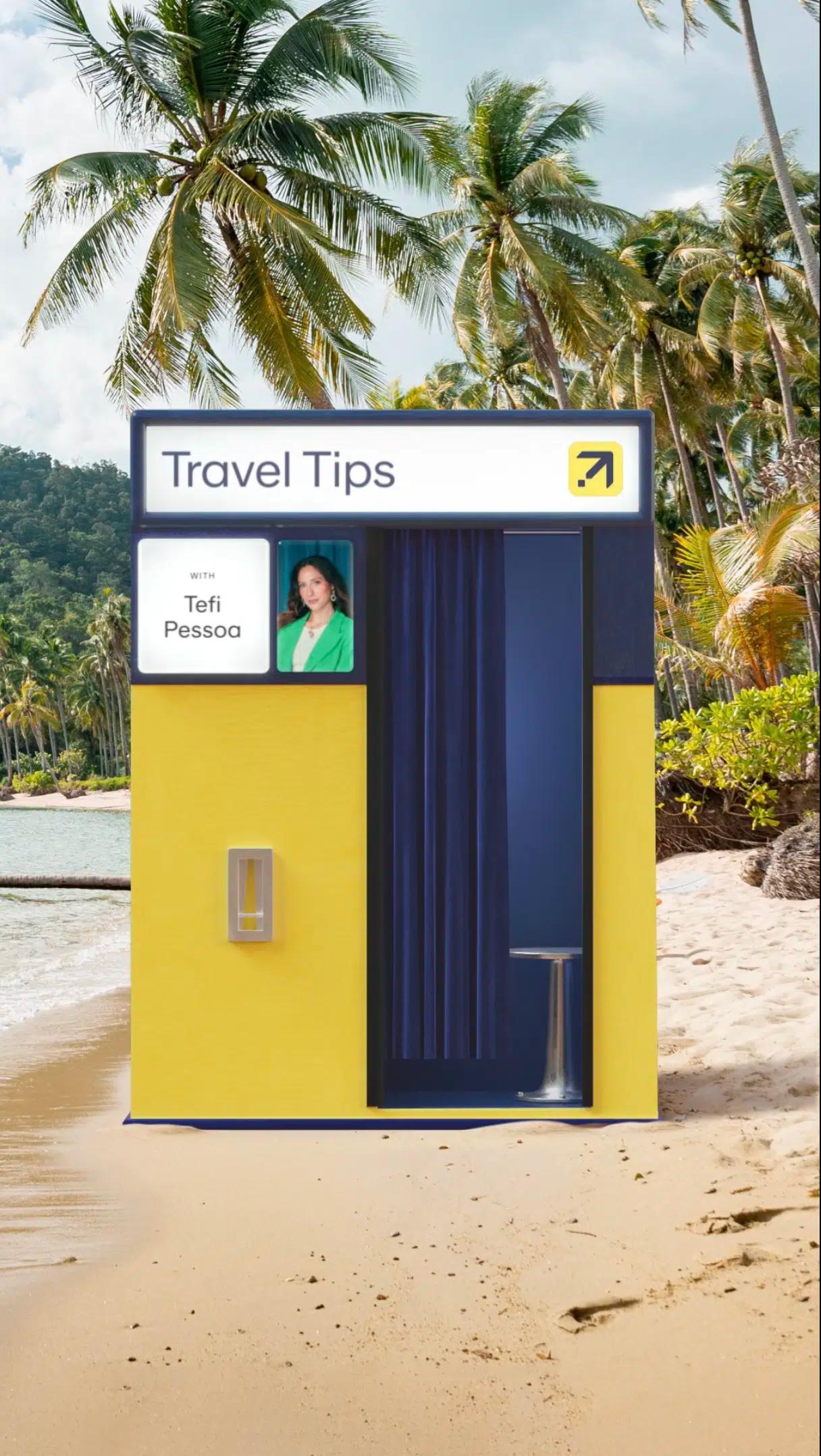
Tefi Pessoa: “Travel helped me understand my family”
By Lara Kilner
January 2024
A solo trip at 22 was transformational for TikTok star Tefi Pessoa—inspiring a lifelong love of travel. Here’s what she’s learned about herself (and her family) along the way
Tefi Pessoa’s world changed when TikTok embraced her effortlessly witty videos and made her a social media superstar, but that hasn’t been her only major life-changing experience. The 33-year-old content creator and pop-culture commentator credits trips to Colombia and Brazil (the homelands of her mom and dad) with making her the person she is today.
“My first memory is in diapers in Rio, and it’s a little traumatizing,” laughs Pessoa. “We’d been eating mangoes, I was washing my hands in the ocean, and a crab crawled over my feet. It felt like an alien touching me. I also remember my mom took me to the doctor because my palms and feet were orange, and they said I’d had too much fruit. I’d do anything for that glow right now.”

The family visited Colombia every summer. “People would say, ‘I went to Paris, I went to Greece.’ And I’m like, ‘I was milking cows an hour outside of Bogotá.’”
Pessoa describes these heritage trips as a unique experience. “You draw the web of your life together. I remember the first time somebody called my mom the baby of the family, and I didn’t understand because my mom has always been 30 years older than me. You get to see your parents in a different way and the identity they fit into with their friends and family. That was a gift that travel gave me—I got to meet them in their home.”
A six-month stay in Bogotá when she was 22 gave her the confidence to travel more—and to leave her native Miami for New York. “When I do meditations and they say, ‘Go to your happiest place,’ I go to Bogotá. I went because I was run ragged with Miami and, when I was ready to reenter society, I felt I could live anywhere,” she says. “I would never be the person I am today and the kind of friend I am if I still lived in my hometown. I know myself better—and travel has opened my world.”
Tefi Pessoa’s heritage travel tips
Take people you love
“Every boyfriend I’ve had, I take back to Colombia. Seeing somebody fall in love with a country you already love is the greatest thing in the world. There’s a fruit called granadilla that you smash open, and inside it looks like boogers, but it’s the best fruit in the world—and I remember seeing my ex do that with my aunt. It was the best.”
Get involved
“In Bogotá, I signed up for all these random courses. I can’t cut an onion, but I signed up for a cooking course. I did tai chi, sound-bath training and Spanish courses, and I’d be like, ‘Do you want to eat lunch together?’ I met all these people and we still follow each other on Facebook, and I see them have babies and stuff. It was the first time in my life where I made myself vulnerable.”

Summer travel dreams are made of this
Add these once-in-a-lifetime experiences to your bucket list
Wherever you go, ask for recommendations
“Swallow your pride and ask. I always post asking for recommendations, then I screenshot them, put them in a folder, go through maps and favorite them. When I have nothing to do, I check the area I’m in and remember that arcade I favorited.”
Believe in yourself, and know you belong
“Traveling in Colombia is a time in my life where I was really proud of myself. A lot of people didn’t think I could do it, because I am the princess, the baby of the family. Being in Bogotá was the first time in my life that I was like, ‘I’m capable.’ Now, when I walk into a room, I feel like I belong there but, when you’re 22, you still kind of ask for permission.”
Eat everything
“We come from a family where they want us to eat everything. Every birthday, I had ajiaco (chicken and potato soup). You can get it from a restaurant, but you need a grandma to make it. I remember when I had a ballet recital and told my grandfather I was going on a diet, he sobbed. He put his head in his hands and audibly wept. So dramatic.”
Get out of the city center and head for Usaquén, a charming neighborhood surrounded by mountains in the northeast of Bogotá. The streets are packed with characterful colonial buildings, you’re spoiled for choice with restaurants, and there’s not only the huge Hacienda Santa Barbara shopping mall at your disposal, but the fabulous weekly flea market, Mercado de las Pulgas.
Locals use the highly efficient TransMilenio rapid bus transit system. It works like an overground subway system and is one of the world’s largest public transport networks. Download the TransMilenio y SITP app to research your journey and buy a card at the entry to the station you’re starting from before loading it with journeys. The passcard (tarjeta) costs 6,000 pesos ($1.50) and an average trip is 3,600 to 4,600 pesos.
A wonderful assault on the senses, Paloquemao Market is not laid on for tourists to buy snow globes and souvenir keyrings. It’s packed with Bogotá residents who still, for the most part, eschew supermarkets in favor of produce from local vendors.
Explore the narrow alleyways: There’s a large area of the market dedicated to flowers (Colombia is the second-largest flower exporter in the world, so chances are the lilies, chrysanthemums, and carnations you buy at your local florist were grown here), and sections dedicated to meat, fish, fruit, and veg. Stock up on fruit such as granadillas and guanabanas (a Colombian soursop), while snacking on arepas (corn-flour tortillas filled with meat or veg) or almojábana, the local cheese bread.
Opt for small, family-run restaurants offering a menú del día. They can be found all over Bogotá (just look for the sign), and you’ll be treated to a budget-friendly lunch of soup, followed by a meat of the day with rice, plantain, beans, and salad, alongside Bogotános refueling before returning to work.

Lara Kilner is a lifestyle journalist who has contributed to The Times, The Telegraph, and more. She has traveled extensively through five continents, but her most memorable trip was the one on which she met her Malaysian husband.
